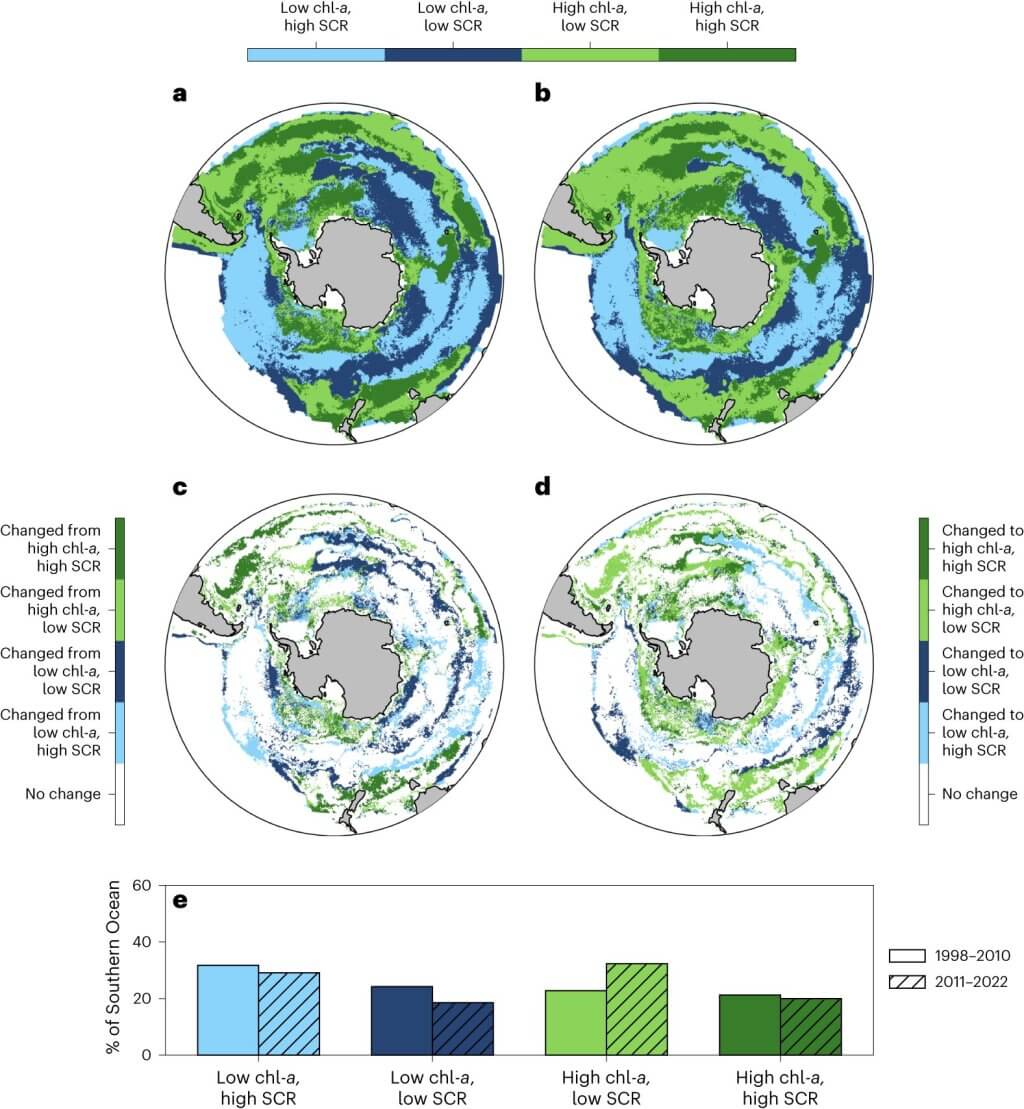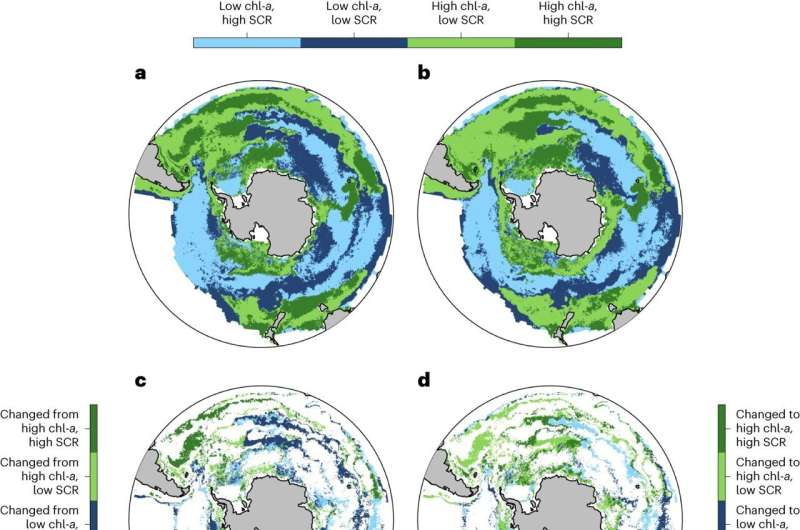
Phytoplankton blooms in the Southern Ocean have initiated later and terminated earlier over past 25 years (Image Credit: Phys.org)

A trio of climatologists at the Southern Ocean Carbon–Climate Observatory, working with a colleague with the Coastal Systems and Earth Observation Research Group, all in South Africa, reports evidence that phytoplankton have initiated later and terminated earlier in the Southern Ocean over the past quarter century. In their study, reported in the journal Nature Climate Change, Sandy Thomalla, Sarah-Anne Nicholson, Thomas Ryan-Keogh and Marié Smith, analyzed of 25 years of satellite ocean color chlorophyl-a data.
To a greater extent than other oceans, the Southern Ocean, also known as the Antarctic Ocean, plays a major role in buffering the impacts of global warming, driven in large part by the work of phytoplankton, which absorbs carbon dioxide found in the atmosphere. Prior research has shown that the Southern Ocean takes up approximately half of oceanic carbon intake and absorbs approximately 75% of the excess heat generated by increased amounts of carbon dioxide in the atmosphere. But its role may be diminishing, according to the researchers.
To learn more about the impact of global warming on phytoplankton in the Southern Ocean, the research team obtained and analyzed satellite imagery captured over the past 25 years that showed the extent of chlorophyl-a coloration, which the team used as a proxy for biomass.
In their analysis, the researchers found that phytoplankton mass in the Southern Ocean has been initiating later every year over the past quarter-century and it has also been terminating earlier. The result is a gradually shortening blooming season. Consequently, less carbon is being absorbed each year. The team found that the blooming season has grown shorter by approximately 50 days per decade. The research team did find one exception—phytoplankton mass in areas where sea ice develops each winter was found to initiate earlier and terminate later.
The team concludes that in addition to reductions in carbon absorption, shorter phytoplankton blooming seasons are likely having a major impact on the food chain, as phytoplankton is a major food source for zooplankton and also some crustaceans, small fish and snails.
More information:
Sandy J. Thomalla et al, Widespread changes in Southern Ocean phytoplankton blooms linked to climate drivers, Nature Climate Change (2023). DOI: 10.1038/s41558-023-01768-4
Journal information:
Nature Climate Change
© 2023 Science X Network
Phytoplankton blooms in the Southern Ocean have initiated later and terminated earlier over past 25 years (2023, August 29)
retrieved 27 September 2023
from https://phys.org/news/2023-08-phytoplankton-blooms-southern-ocean-terminated.html
part may be reproduced without the written permission. The content is provided for information purposes only.





